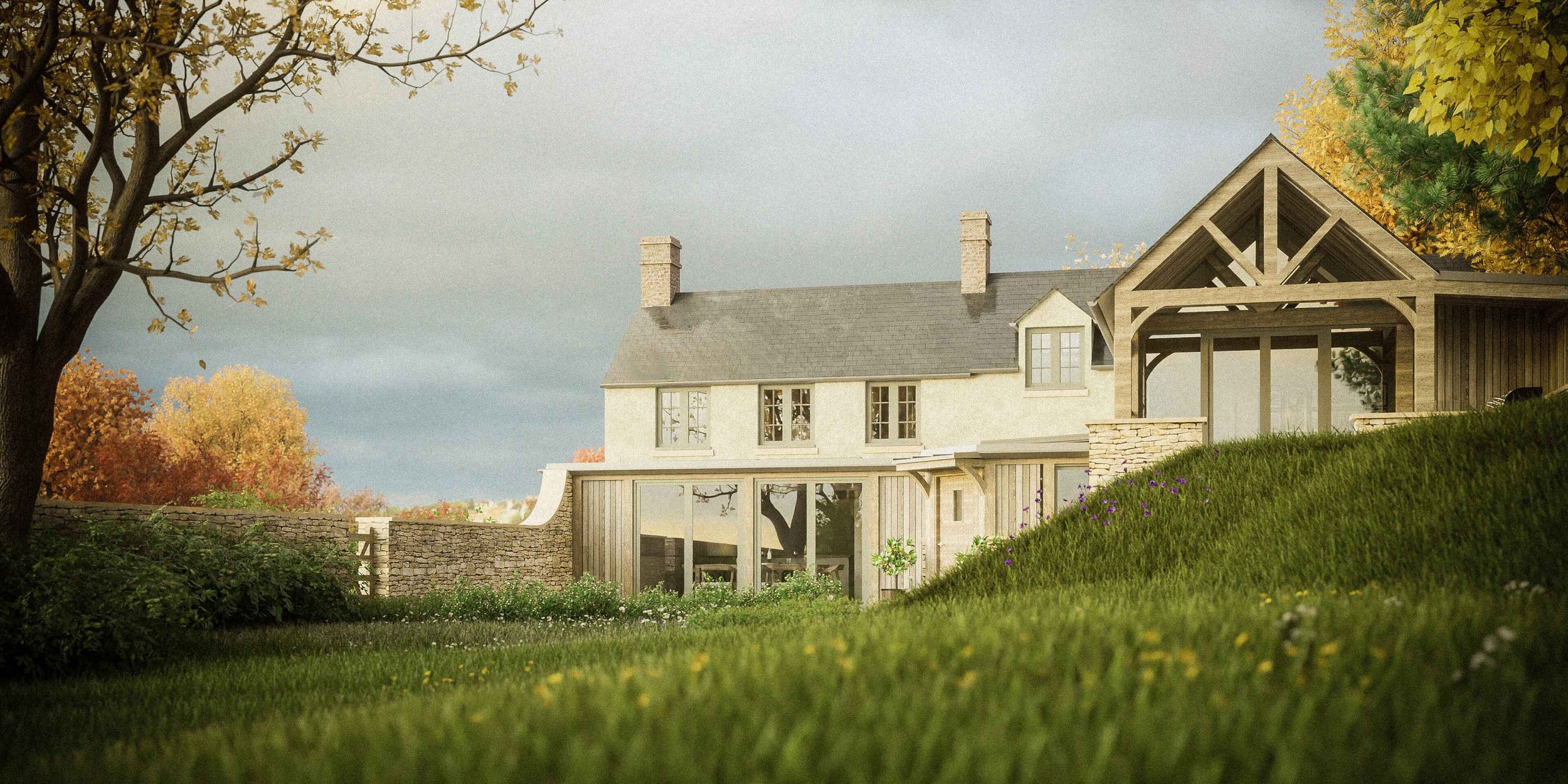
Creative & Sustainable Design for Residential Projects
Joshua Hovey is a RIBA Chartered Architect & Certified Passivhaus Designer, Serving Somerset, Gloucestershire and Surrounding Areas.
Sustainable & Innovative
New-Build
We help self-builders looking to design their dream eco-home, and land owners looking to maximise the potential of their plot. We have a proven track record of securing planning permission within challenging design constraints such as conservation areas, national parks, AONBs and near listed buildings.
Contemporary Extensions
We design beautiful contemporary extensions. Transform your living space by adding natural light, improving the connection with the outdoors and creating harmony between spaces.
Listed and Heritage Property Alterations
Do you have a listed building or period property which lacks natural light, feels disconnected from the outside and has poor flow between living spaces? We are experts at turning period properties into functional homes, customised for modern living.
Sensitively Designed Barn Conversions
We are architects skilled at working with listed buildings such as barn conversions, in conservation areas and AONBs and with complex design constraints. Let us help you to make the best use of your existing building.
Domestic Architects | Joshua Hovey Architects
Key Design Considerations When Planning an Architectural Project for Your Home
Understanding Local Planning and Building Regulations
When planning an architectural project for your home, understanding local planning and building regulations is essential. Domestic architects must navigate these regulations to ensure that the project complies with legal requirements. This includes adhering to local planning policies, securing necessary planning permissions, and meeting building regulations. A thorough understanding of these requirements helps in avoiding potential issues and ensuring that the project proceeds smoothly.
Incorporating Sustainable Design Principles
Sustainability is a crucial consideration for any home improvement project. Domestic architects should integrate sustainable design principles to enhance the environmental performance of the home. This includes using energy-efficient materials, incorporating renewable energy sources, and designing for reduced energy consumption. By prioritising these elements, architects can help create a home that is not only eco-friendly but also cost-effective in the long term.
Harmonising with Existing Architecture
When planning a project for your home, it is important to harmonise the new design with the existing architecture. Domestic architects need to consider the current style, materials, and proportions of the home to ensure that any additions or alterations blend seamlessly. This helps maintain the visual cohesion and enhances the overall aesthetic appeal of the property, ensuring that new changes complement rather than clash with the existing structure.
Maximising Space and Functionality
One of the primary goals of a domestic architectural project is to maximise space and functionality. Architects should focus on creating designs that enhance the usability of the home, whether through efficient layouts, clever storage solutions, or multifunctional spaces. Effective space planning can significantly improve the quality of life by making the home more comfortable and functional for its occupants.
Enhancing Comfort and Livability
Creating a home that is comfortable and enjoyable to live in is crucial. Domestic architects should consider factors such as natural light, ventilation, and acoustic performance when designing the project. Ensuring that these elements are addressed can greatly enhance the comfort and livability of the home. By focusing on these aspects, architects can help create a space that is not only aesthetically pleasing but also pleasant to live in.
By focusing on these key design considerations, domestic architects can develop architectural projects that adhere to local regulations, incorporate sustainable practices, harmonise with existing structures, maximise space and functionality, and enhance the overall comfort and livability of your home.









